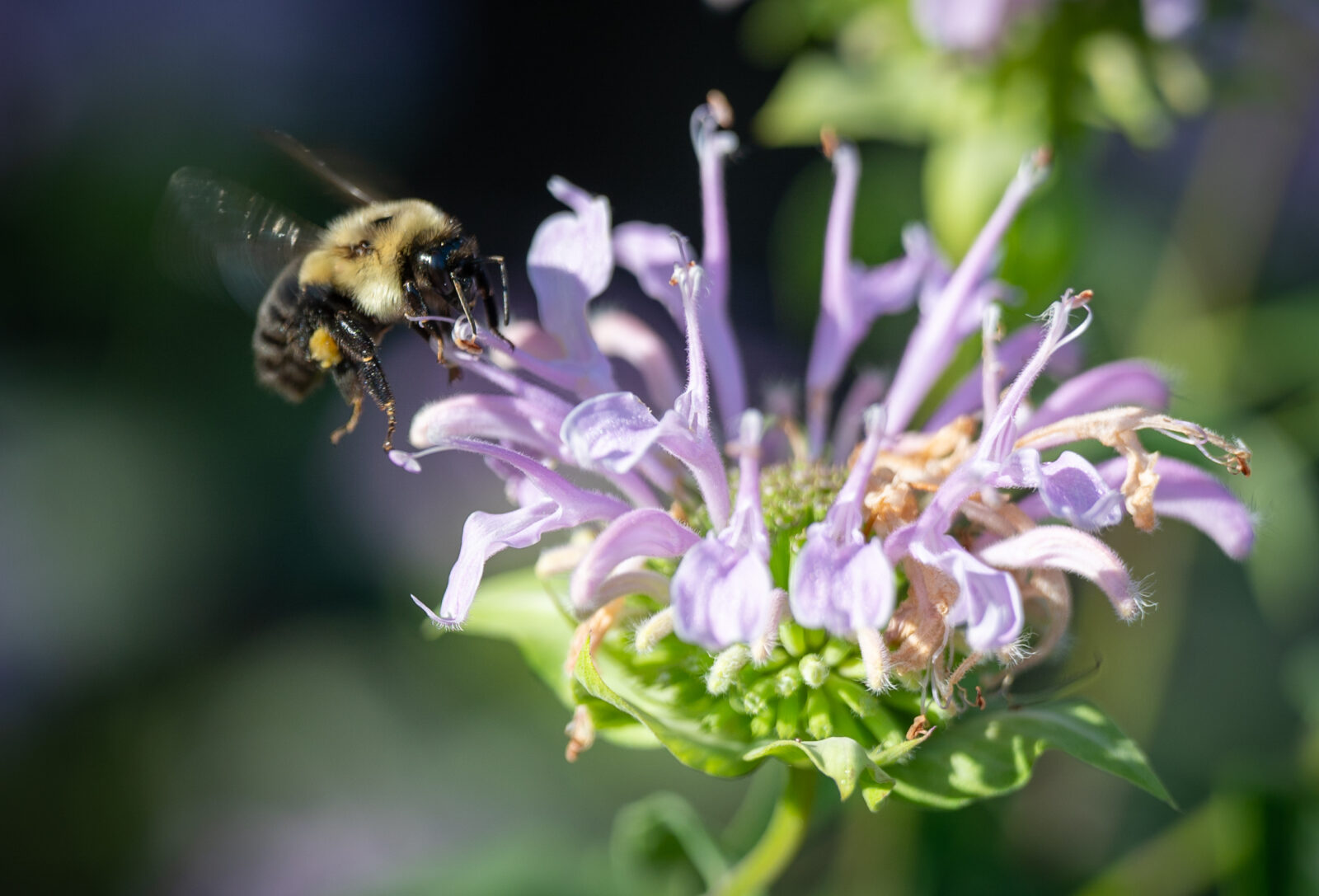Following a recent study that uncovers bees as significant allies in their fields, U.S. soy farmers are abuzz.
You aren’t alone if you find it hard to picture honey bees and other pollinators buzzing around a soybean field. Researchers at Ohio State University were surprised to discover bees don’t just visit these fields; they use soybean plants as a significant pollen source.
Their findings have caused quite a buzz among the scientific community and the farmers, who are thrilled about their role in contributing to a more sustainable landscape.
In 2022, about 133.3 million pounds of honey was produced by busy bees. Now, research points out that the 87.2 million acres of soybeans planted in the U.S. go a long way in facilitating this honey-making operation.
At first glance, soybean plants aren’t known for their flowers and pollen. The small flowers beneath a canopy of green leaves make it less noticeable for anyone, let alone bees, to notice. Yet, researchers have found that bees visit these tiny flowers.
A recent article published in the Journal of Economic Entomology discovered that honey bees preferred soybean fields for foraging over other habitat types in Ohio.
“With these study results, future research efforts aimed at enhancing interactions between soybeans and honey bees may represent an unexplored pathway for increasing soybean production while supporting honey bees and other pollinators in the surrounding landscape,” the study summarized.

The extent to which honey bees forage on soybean flowers remains uncertain, and the topic has been hotly debated among beekeepers for decades. However, the study suggests that beekeepers may be harvesting a substantial amount of soybean honey, as studies have frequently found soybean pollen in honey and the bees’ stomachs.
The finding is familiar to Dr. Matthew O’Neal at Iowa State University (ISU) in Ames, Iowa. O’Neal, an H.A. Wallace Chair for Sustainable Agriculture and professor in the department of Plant Pathology, Entomology and Microbiology, oversees research related to the management of insect pests of annual crops with a focus on soybeans. He is also a member of the Iowa Pollinator Conservation Working Group.
“It’s important to know how soybeans respond to honey bees, but also how honey bees respond to soybeans.” he says about the research they are doing.
Studies have shown that when soybean plants are flowering, typically from mid-June to early August, honey bee gain weight at the colony level, bringing the nectar back and making honey. They also have discovered pollen from soybeans in the nectar.
“If you go to Mississippi, there are beekeepers that actively seek out soybean farmers to put their colonies next to the soybean farm so they can make a honey crop,” O’Neal says. “In some ways, it’s not a secret that soybeans are a nectar source.”
The flip side of the ongoing research is to see if the soybeans are gaining anything, like increased yields, when bees visiting the flowers.
“That’s a little bit harder question to answer,” he says.
Researchers have published results that suggests soybeans can benefit from being visited by honey bees and wild bees. The visits by the bees can increase yield ranges from single digits up to 18 percent. However, they can’t pinpoint how consistent the yield benefits are and if the increased yield is consistent in every soybean plant variety.
“I tell my students there are biology questions, and there are management questions,” O’Neal says. “We’ve kind of answered some of the biology questions, but there are a bunch of management questions we haven’t answered yet.”
Because soybeans only flower briefly, many bees have a nectar hangover when their favorite flowers start drying up. To help the bees forage consistently, researchers are testing landscapes that, in conjunction with soybean plants, can provide nectar in August, September and beyond.
“If you provide for the bee in August and September, you can rescue them from this famine,” O’Neal says. “That rescue can come in the form of the native, perennial plants that used to be in our landscape.”
Researchers at ISU have been exploring ways to add vegetation to the landscape through prairie strips. Prairie strips are strips of native plants that help prevent soil erosion, improve water quality, and provide food for bees. The prairie strips are planted within corn and soybean fields, potential in areas that don’t produce well.
“It involves taking a little bit of land out of production and putting in native perennial, flowering vegetation, that is, prairie. What we’ve learned and published on this is the prairie strips can improve the productivity of honey bees by about 20 percent,” he says.
Early results from farms with prairie strips have demonstrated that the abundance of honey bees, native bees and other pollinators increase. Prairie strips are part of the USDA’s Conservation Reserve Program that pays farmers to increase adoption by replacing lost income.
“Farmers say that it is has added biodiversity, and others have talked about building a legacy,” O’Neal says about reactions he’s heard about the prairie strip trials. “One farmer showed up with a big jar of honey that he got when he let a beekeeper keep bees at the prairie strip site.”
The next time you enjoy a touch of honey with your meal, it might have been produced with the help of soybean flowers and, of course, a busy little bee.
